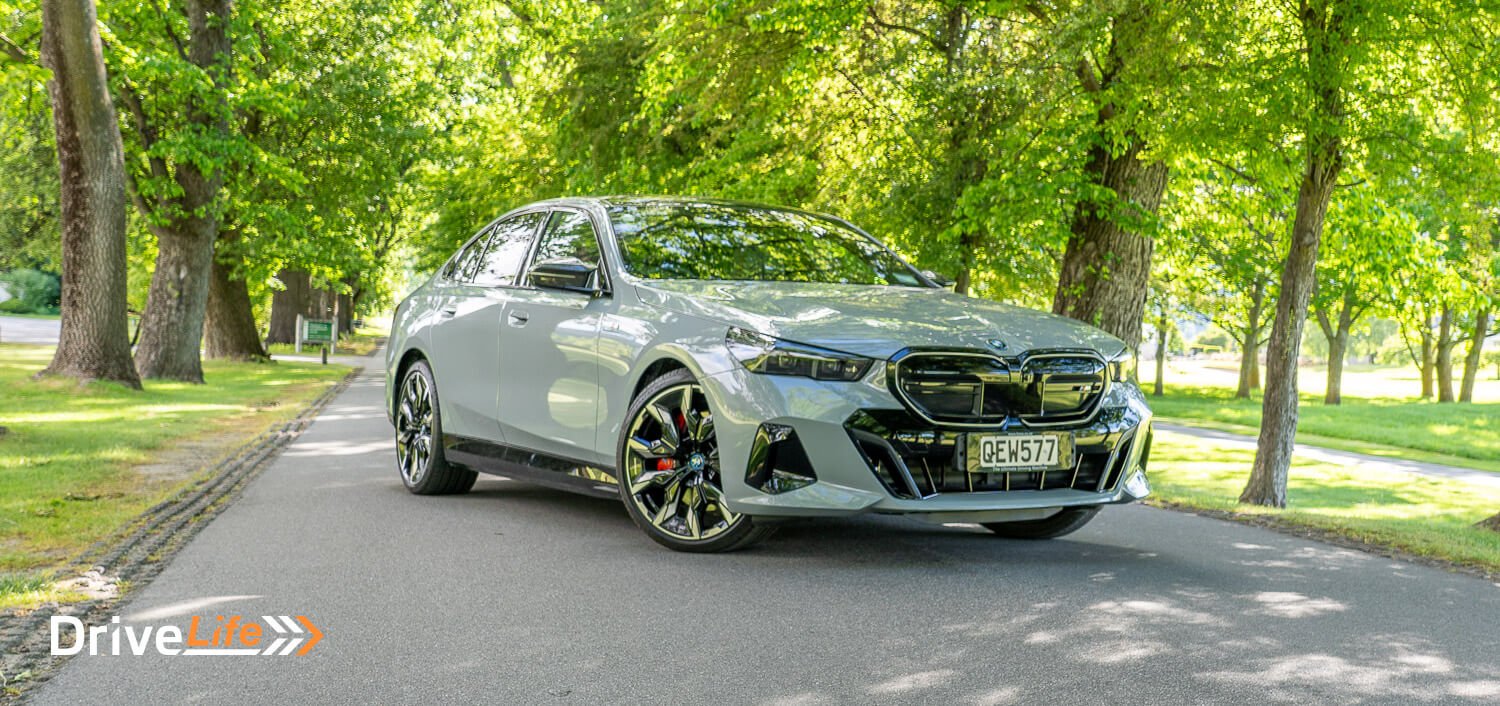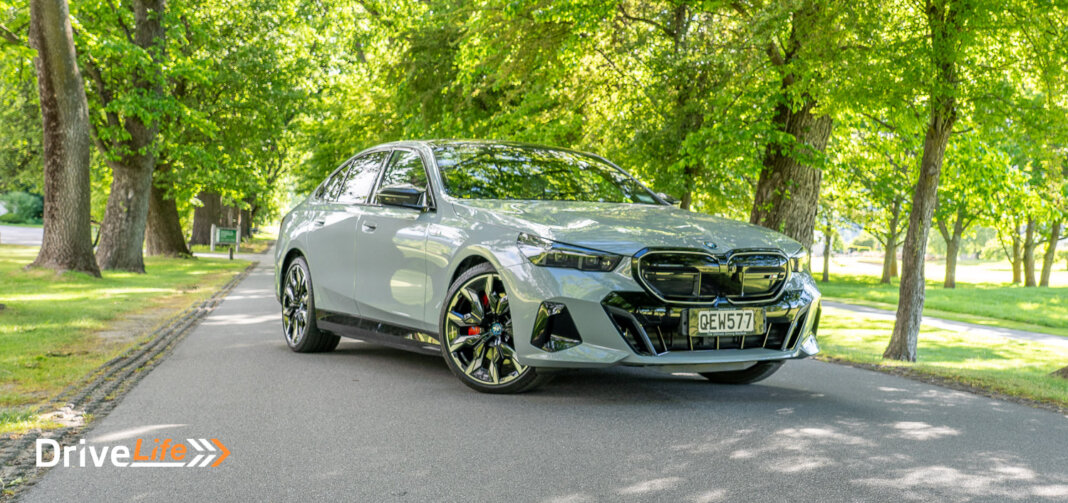Talk about your iconic BMW. It’s almost unbelievable, but the 5 Series range has been with the world for 51 years, having its launch in 1972 – the same year as the Olympic Games were held in Munich.
Many people are likely unaware that for the Olympic Games in 1972 in Munich, BMW built a handful of 1600 model BMWs as full EVs, called the ELEKTRO-ANTRIEB (“electric drive”). These cars were used to shuttle VIPs around to different events, and the cars had a range of just 30km – plenty for inner city user for the games. The 1972 BMW EV was also used as the lead car in the marathon event.
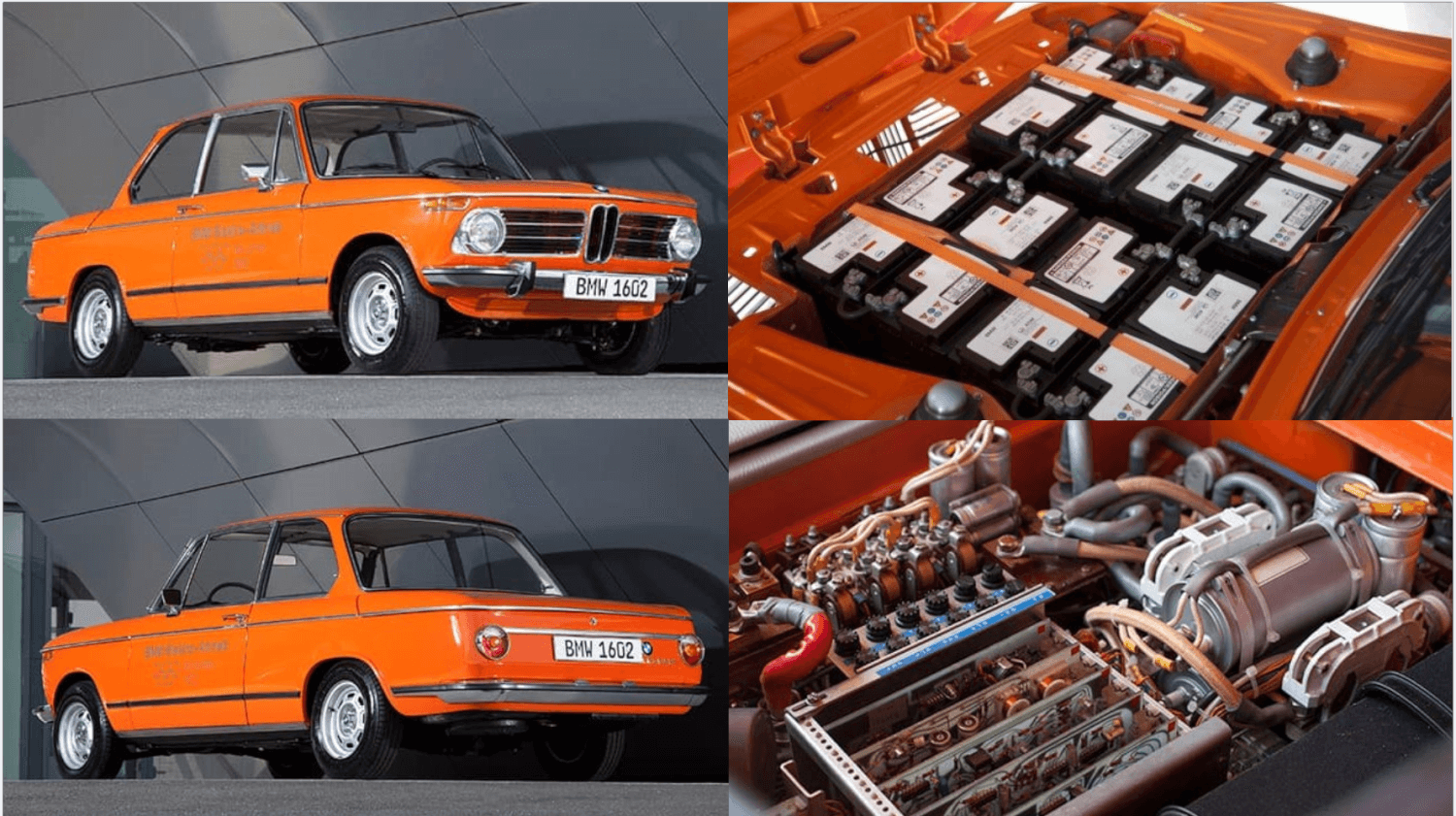
1972 was also the year that BMW built their headquarters in Munich, right across the street from Olympic Park.
BMW invited us to Queenstown for the launch of the 8th generation 5 Series, called the i5. Can a fully-electric 5 Series carry the same passion for driving and BMW’s long-standing claims of always building a driver’s car?
2012 BMW 5 SERIES: BMW NZ State Of The Nation
Adam Shaver, the General Manager of BMW New Zealand, brought us up to date with happenings in their industry and BMW/MINI sales for the year to date. From January to October this year, total BMW sales are up 6% while he suggests that overall, sales for all brands are down 5%. Adam says that their overall sales in New Zealand have climbed 6% year on year, with some models increasing by 11%.
MINI sales are up too, selling 812 units, an increase of 11.2%.
Year to date, BMW in New Zealand have sold 621 fully EV models, a huge increase of 40% over last year. This figure is more impressive when you consider that BMW had no cars under the $80,000 threshold for the Clean Car Rebate.
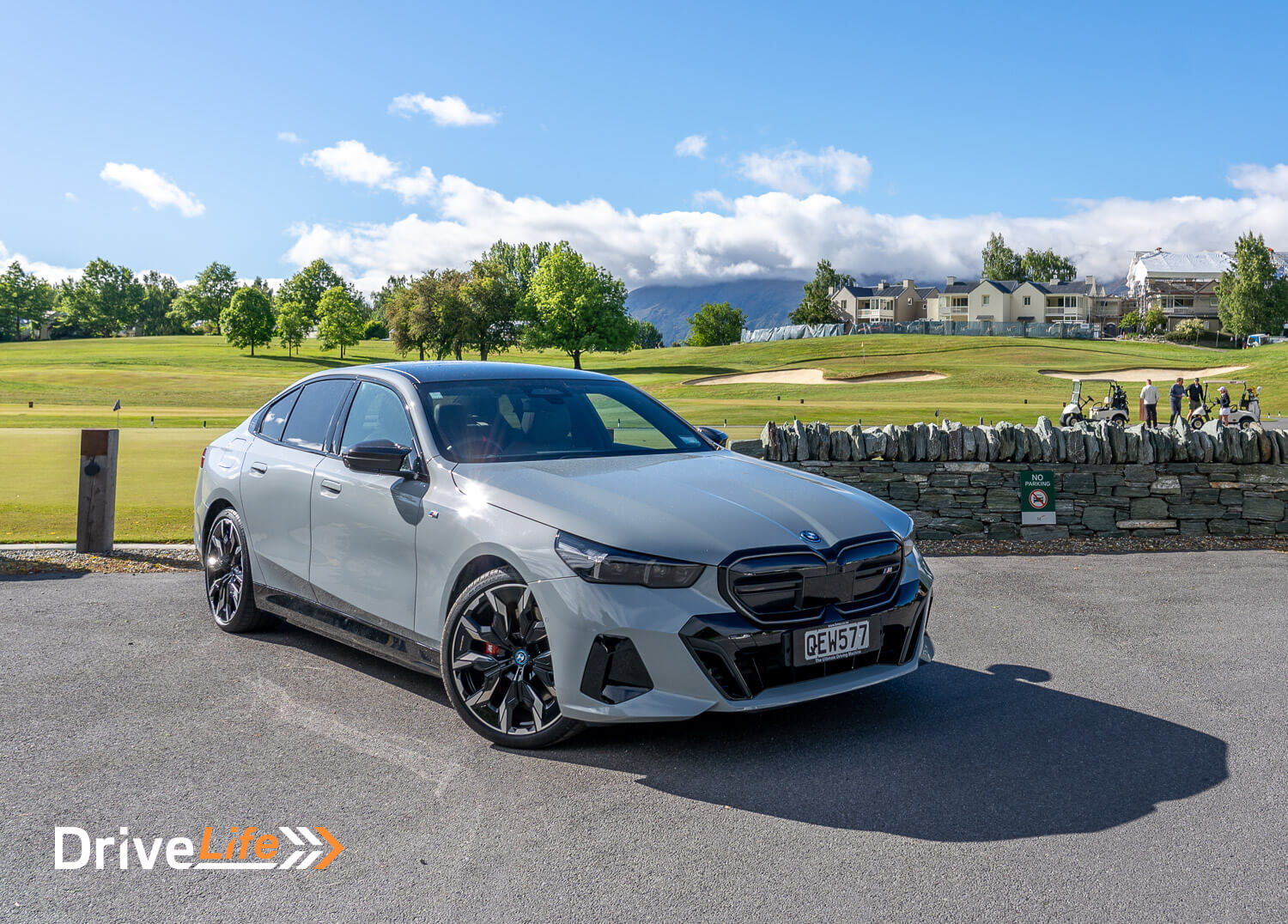
BMW 5 SERIES: History
1972 was obviously an important year for BMW. Along with the 5 Series and their new HQ, the plant at Dingolfing commenced production, building the 5 Series. Every generation of the 5 Series has been built here, including the new model. The plant has been modernised greatly, and this includes all EV batteries being produced at the plant.
The 5 Series was the first model to use a ‘Series’ nomenclature, like 3 Series or 5 Series. It’s a very successful model for BMW, having sold over 10 million units worldwide. In New Zealand, a total of 2,710 have been sold new here since its launch here in 1986 – two years before the 5 Series won the Car Of The Year award in New Zealand.
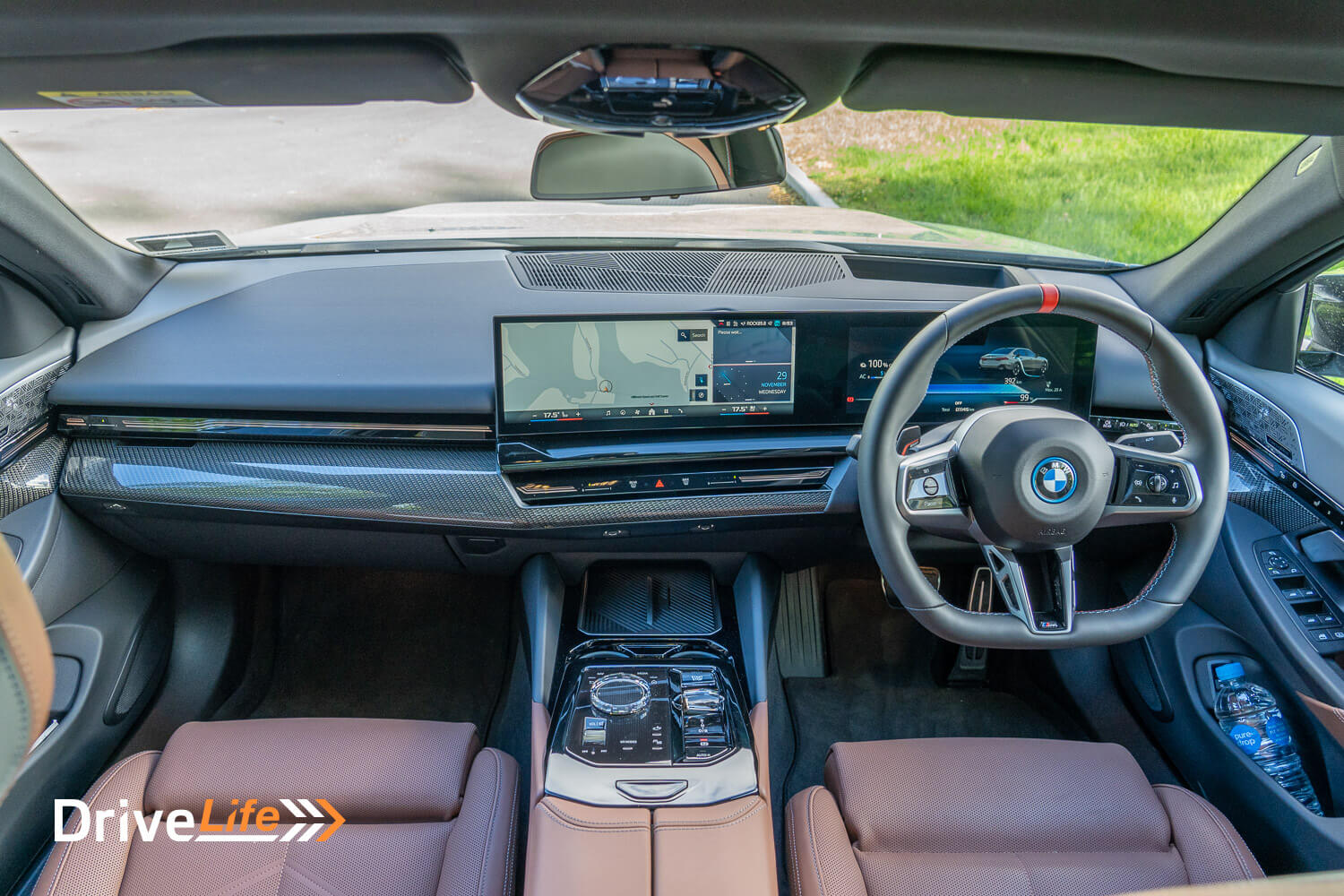
2023 BMW 5 Series
The all-new model is the G60, signalling a move on from the previous naming of each generation as ‘E’, although the 7th (current) generation is the F10. In New Zealand, we will see just one model, the M60 xDRIVE. This is currently the top-spec version of the car, with two electric motors. The front motor has an output of 192kw while the rear manages 250kW. This means a combined output of 442kW of power and 820Nm of torque.
For those concerned about range, the battery pack has a chunky 84kWh of usable stored energy. On the WLTP rating scale, that means a range of up to 512 km.
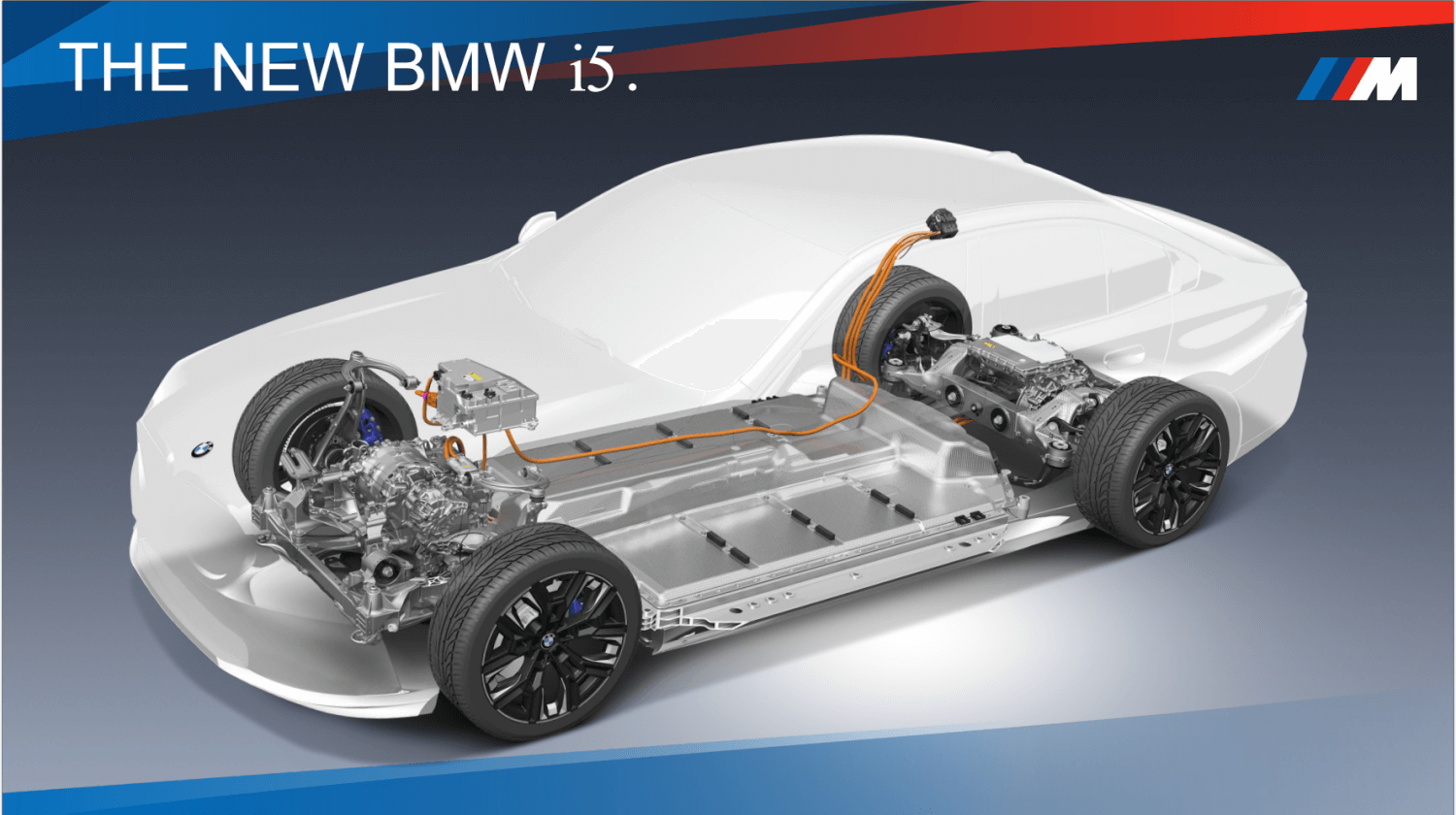
2023 BMW 5 Series: Design
On the design front, there is a new Illuminated kidney grille that BMW says is much larger than previous generation, but certainly doesn’t look as bad as some other BMW models. It seems like BMW hasn’t gone too far with the 5 Series styling from the previous generation, even though the temptation must have been there since this is a fully electric car now. It looks good on the screen, but will reserve a decision until we see it in the flesh.
Hand on heart, I think that an existing 5 Series owner would be open to moving to this i5 without being put off by too much “EVness” in the design. It’s a nice balance of a modern look but traditional 5 Series design.
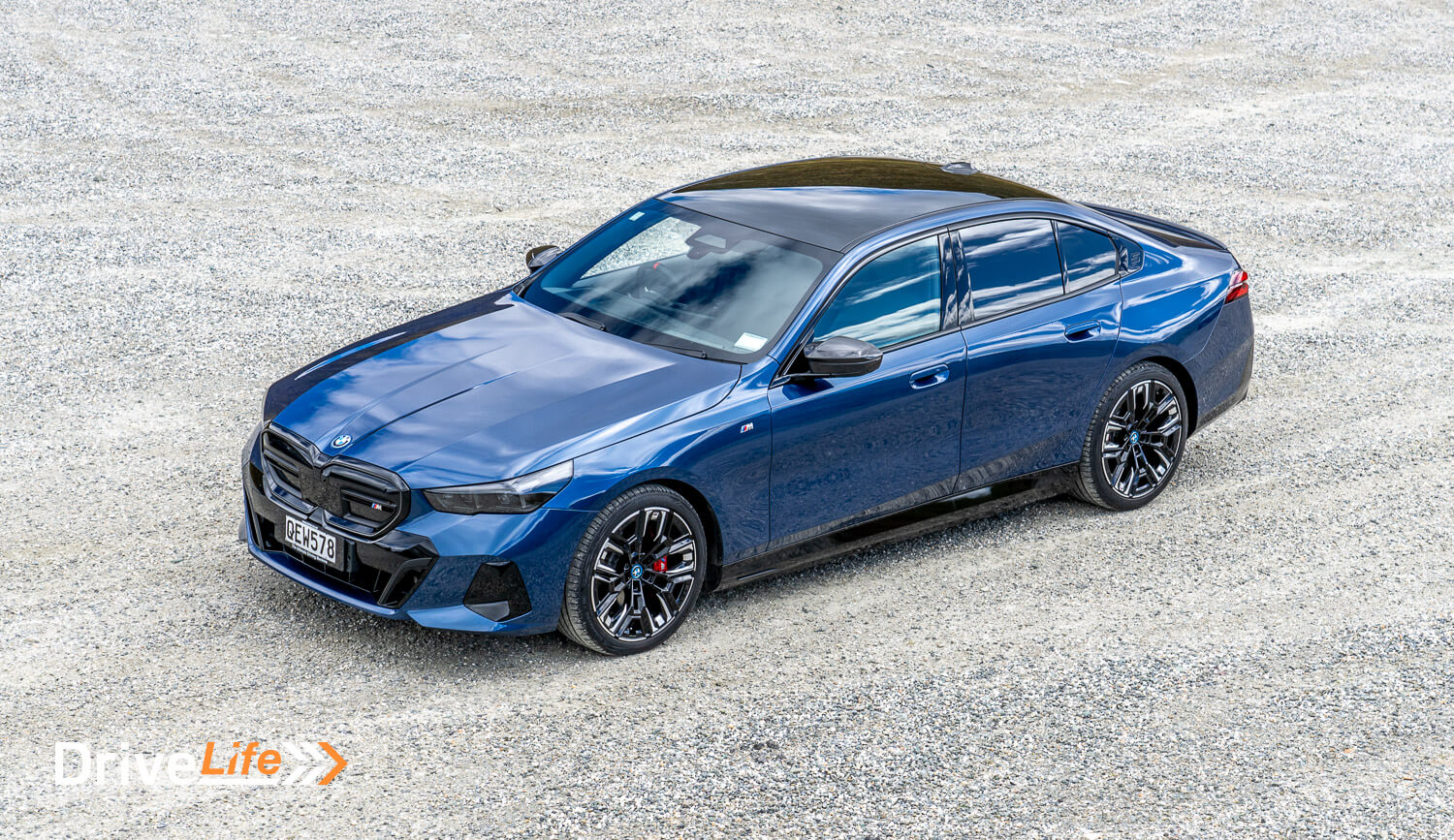
2023 BMW 5 Series: Interior
The new 5 Series takes the ‘Interaction Bar’ from the i7, although thankfully for me, BMW’s “Crafted Clarity Glass Application” is limited to the gear selector, start button a few other places. It would sure seem out of place in a sporty model like the i5 M60 to have too much crystal effect splattered about the cabin.
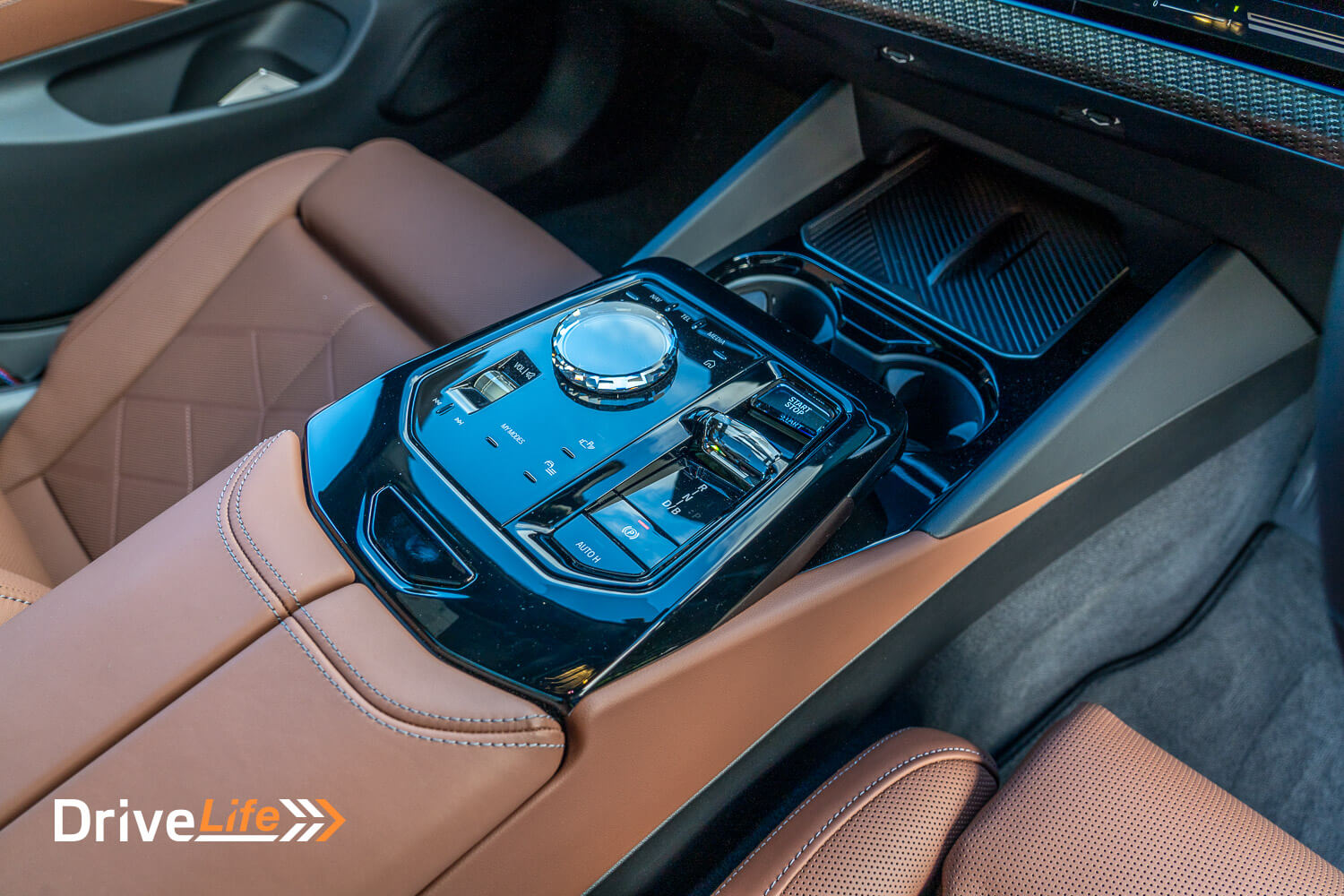
The cockpit is now more driver-centric, and BMW’s curved screens are in place. Since we are only getting the top-spec model here that means a panoramic (fixed) moonroof is standard, along with a huge list of other features, like heated and ventilated front seats, an electrically adjustable steering wheel, heads-up display, and what seems like all of BMW’s current safety and driver assistance features, like Driving Assistant Professional, Parking Assistant Professional, and an augmented view dashboard. Interestingly, even at $196,900 you have buy an option pack to get steering wheel heating.
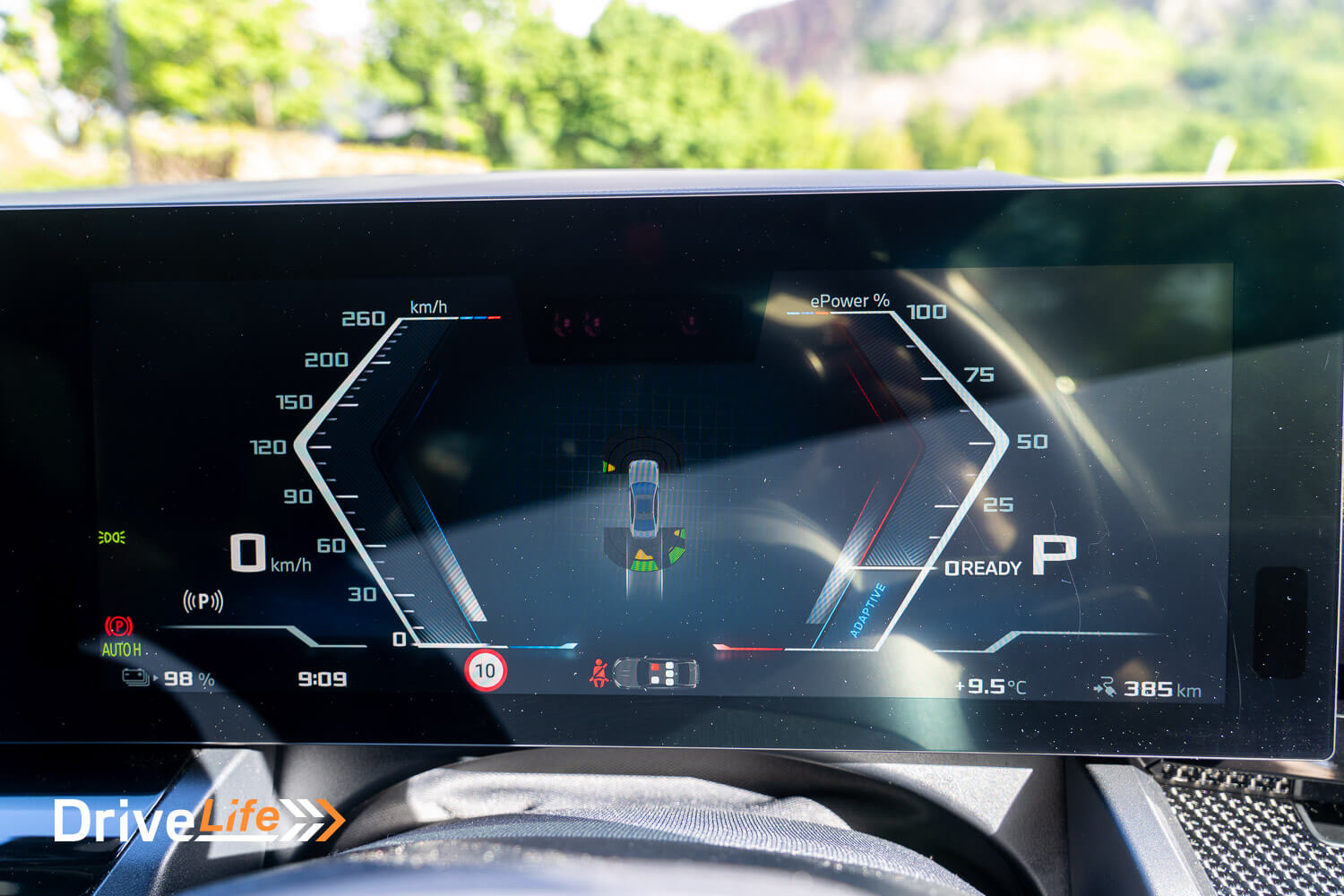
Parking your new i5 is now easier with remote parking using a phone app – so you can park your i5 in a tight spot without being in the car, and the Manouvering Assistant can now reverse the car for you for up to 200 metres (previously 50 metres).
As per normal BMW fare, there is a variety of interior options for colour and materials, with vegan options at no cost.
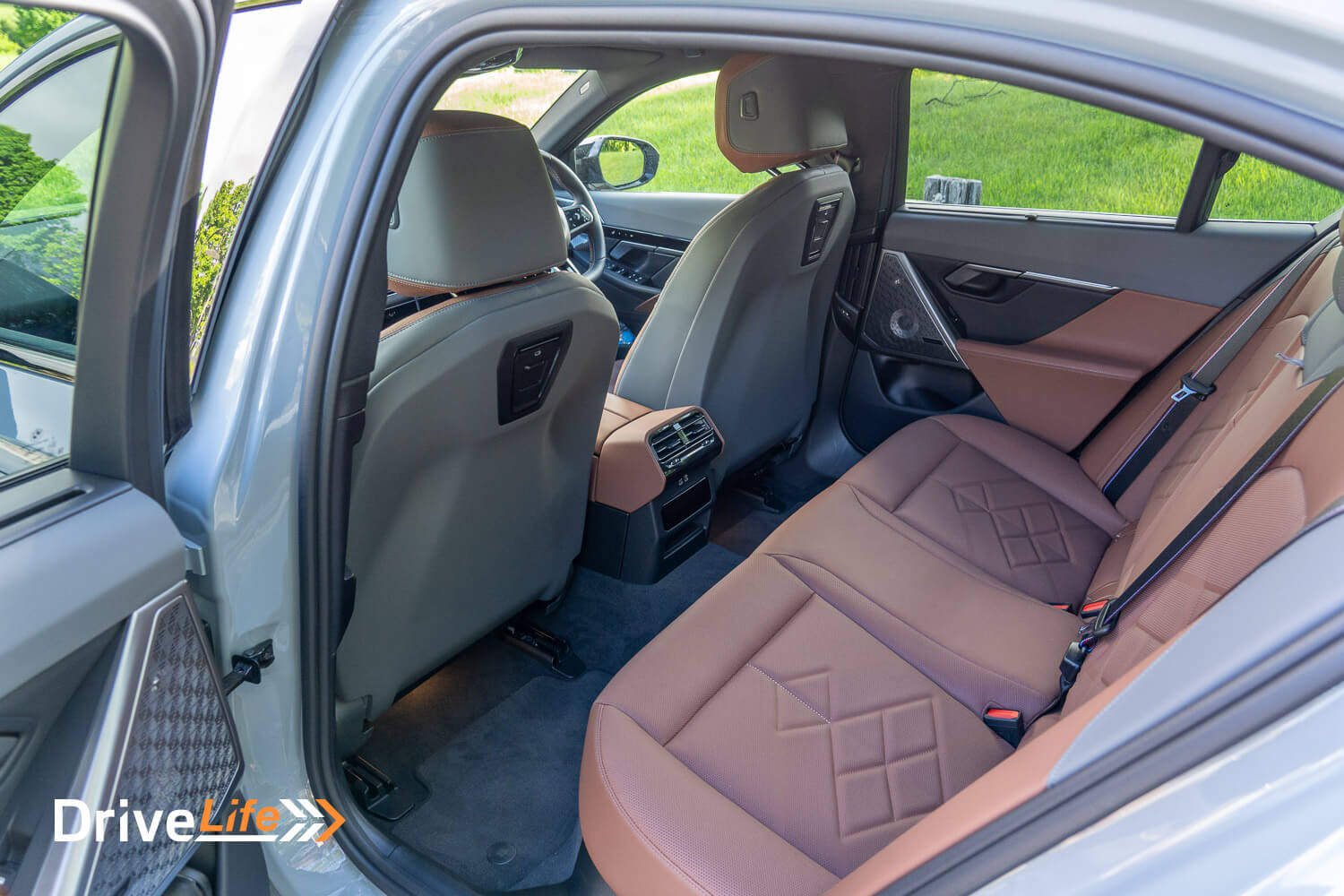
2023 BMW 5 Series: Powertrain And Chassis
Along with that huge amount of power, the i5 M60 has huge M Sport brakes, Rear Active Steering, all-wheel drive, Active Roll Stabilisation and other improvements that we will cover off in a full review.
New to this model is a Boost Mode function; this allows the car to use maximum acceleration for up to 10 seconds at a time, meaning a 0-100km/h sprint of 3.8 seconds.
That battery pack will take a maximum charge of 205kW, meaning faster charging times if you are using a hyper charger, or simply a charger that can provide more than 50kW.
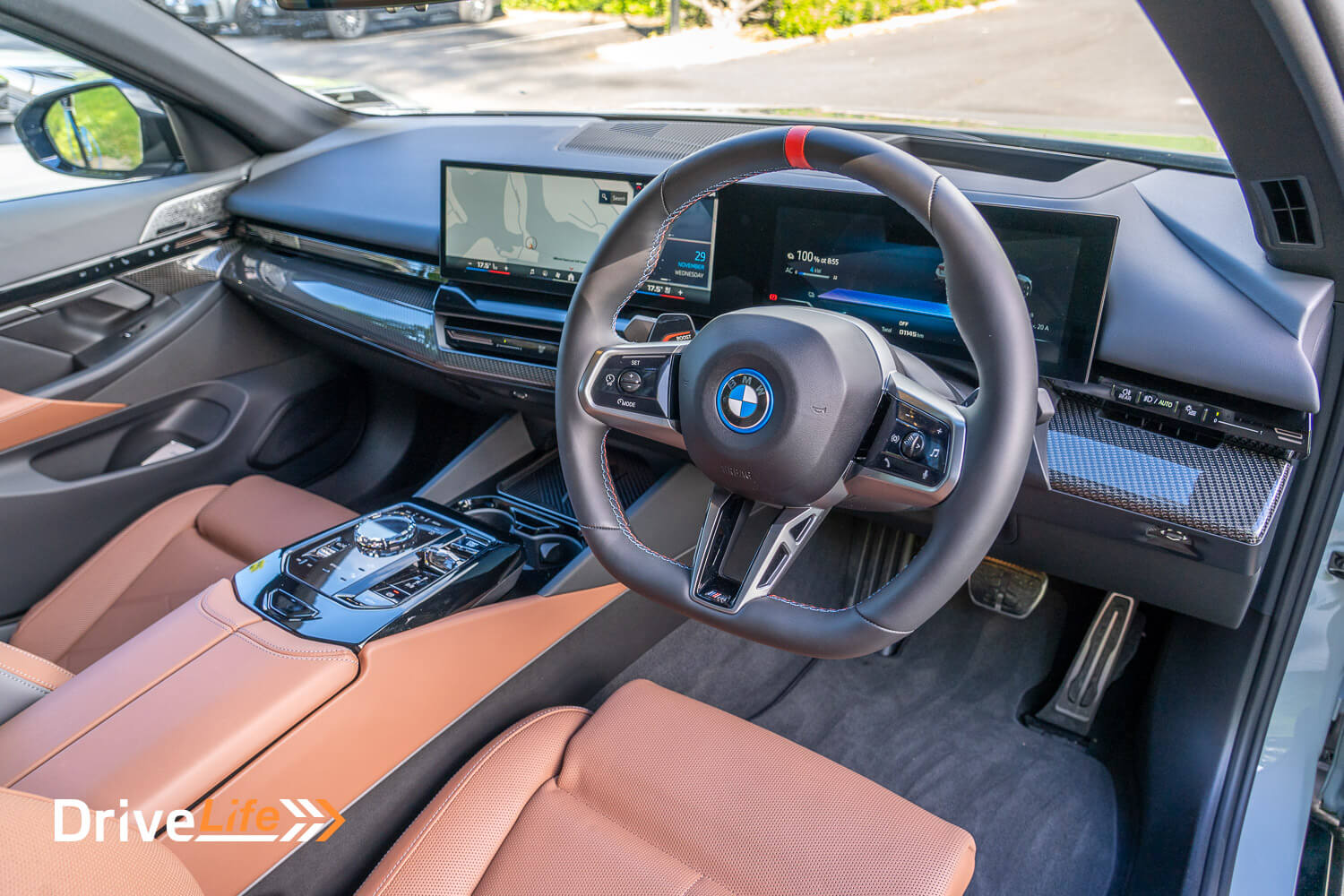
2023 BMW 5 Series: Driving Assistance
With 8-megapixel cameras and 40 external sensors, the i5 is going to be providing a lot of driver assistance to keep you safe. Along with those two items, there is now a long-range radar to help with safety and adaptive cruise control functionality.
2023 BMW 5 Series: Efficiency And Dynamics
With front air curtains, Active Air Vent Control, a flat undercarriage and ‘Air Performance Wheels’, the new i5 manages a drag coefficient of 0.23. Looking at the design features and photos of the undercarriage, you can see a lot of thought has gone into making this car as slippery and as efficient as it can while retaining that 5 Series look.
The new model also has a ‘Max Range’ function that will limit your speed to 90km/h, and switch systems like aircon and lighting to lower modes to save power, just in case you were down on charge in your i5. BMW claims this function can add 25% extra range to your i5 when it’s needed.
There is also thermal management of the drive battery, where the i5 will heat or cool its battery pack to the ideal temperature in advance of a fast charge. Yes, Tesla and others do this, but many do not, so this was good to see in the new model.
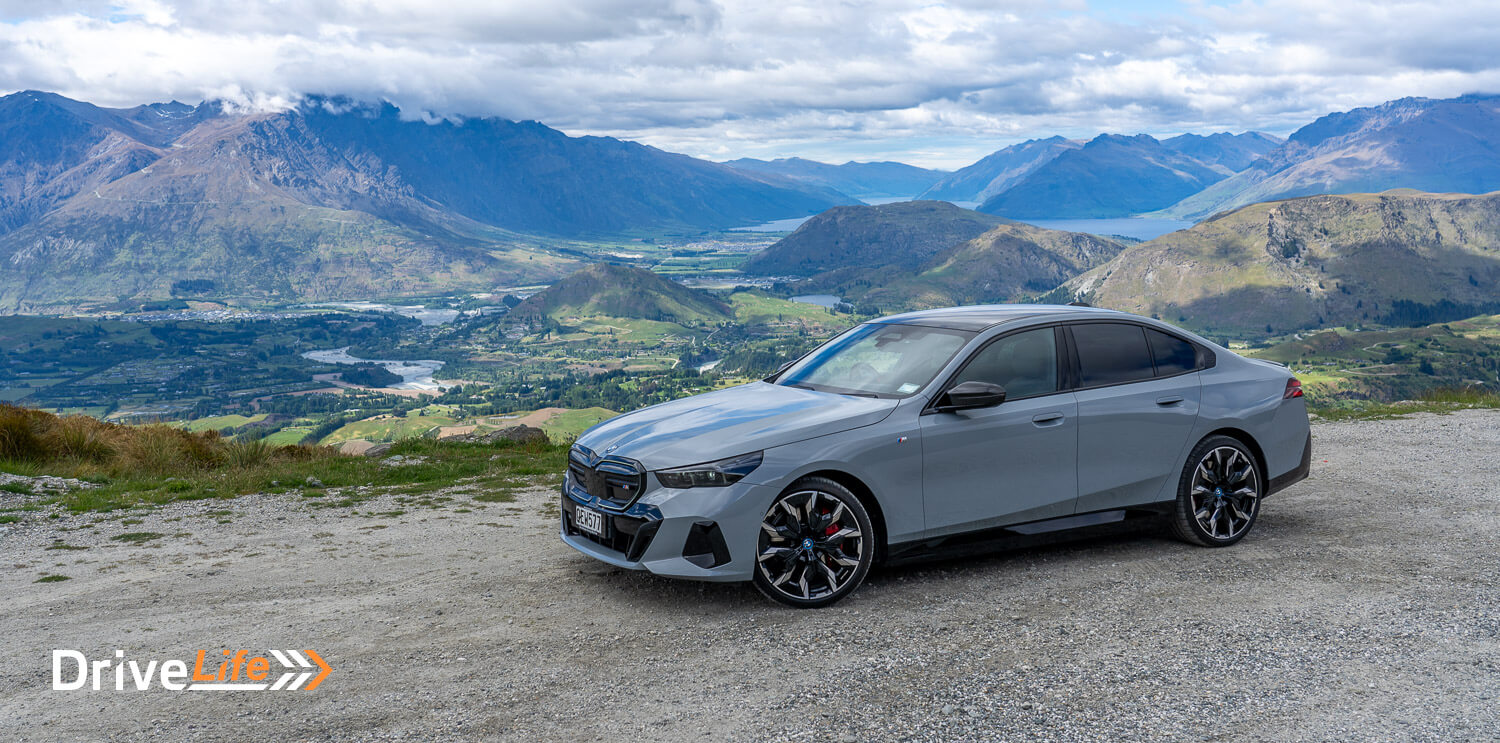
On the charging front, buyers will get a complimentary membership to ChargeNow (part of ChargeNet) that equates to a 10% discount on charging when away from your home. This discount is valid for 24 months from the date of purchase.
More importantly, all i5 buyers will get a free ‘wallbox’ home charger. The owner will be responsible for the installation costs, however, this is a great initiative to get buyers off trying to charge their i5 from a standard power outlet.
BMW has also invested heavily in their ‘Destination Charging’ project, where they are supplying wall chargers to hotels, golf clubs and other places, for any EV user to be able to charge their EV. These are 22kW chargers, and Millbrook Resort – where the i5 was launched – had 6 of them available.
2023 BMW 5 Series: Infotainment
Naturally, the i5 has BMW’s latest operating system, now with Quick Select shortcuts, to get users quickly to their favourite items. As before, you can use the iDrive controller, the touchscreen or voice to control aspects of your i5. Gesture Control is in place as well, if you like to use that feature.
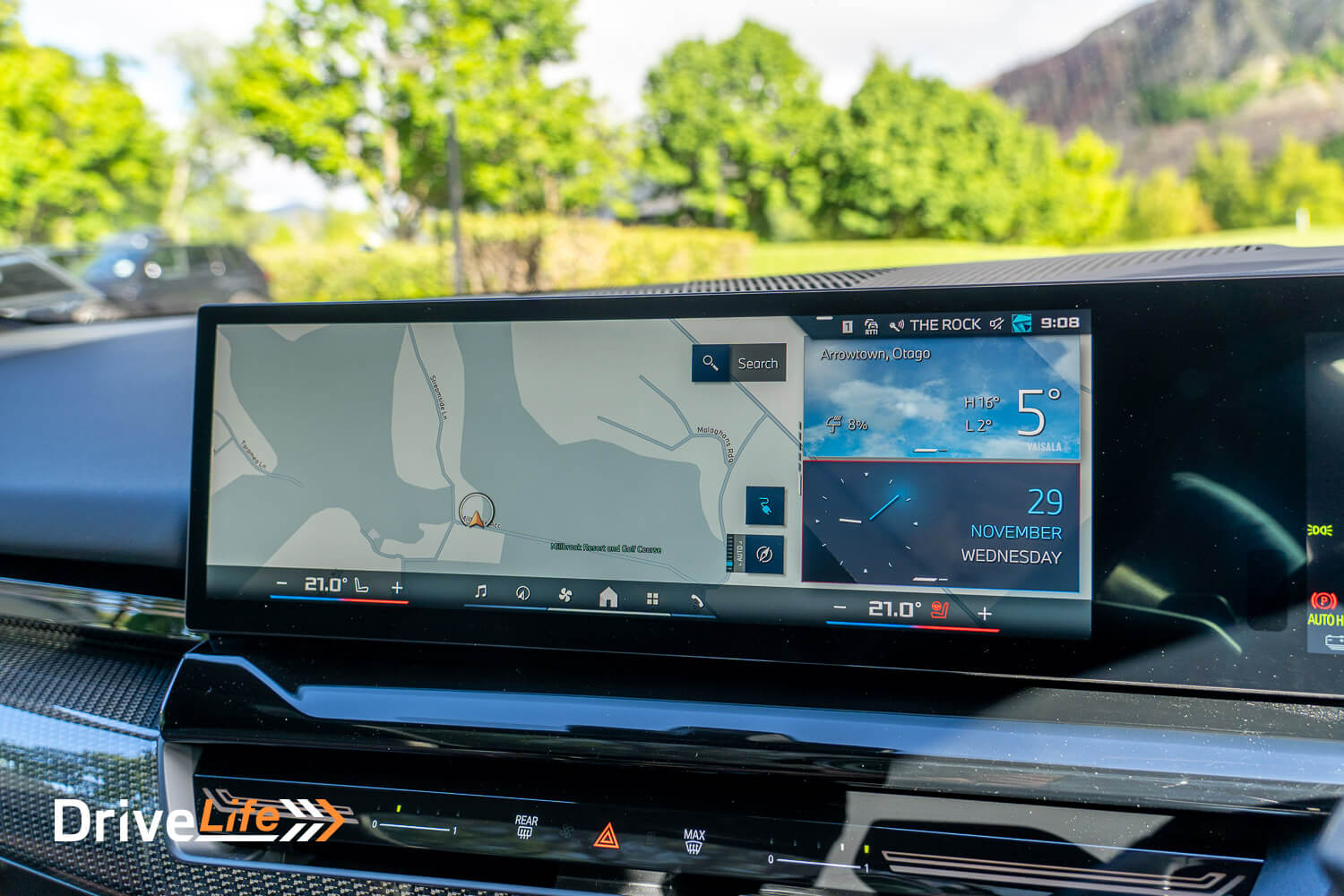
You can also stream YouTube to your i5’s screen, although you will need a personal eSIM – but this is included with the car.
An all-new feature is in-car gaming; this allows up to 5 people to use their smartphone as a gaming console and compete with other players. There are currently ten games you can access including driving games, trivia, and others. BMW suggests this is a great way to pass the time when charging the car up when away from home. It is a trial/pay system, so you will need to subscribe to keep using it once the trial period is over.

2023 BMW 5 Series: Pricing
The i5 M60 is priced at $196,900 in New Zealand. It has a long list of impressive features:

You can select from two option packs and buyers can have both option packs added to their i5 if they wish.
The option packs are:
- Comfort Package ($3,200)
- M Sport Plus Package ($4,000)
The cars we would drive today have both option packs fitted.

2023 BMW i5 LAUNCH: Drive
Presentations over, it was time to get behind the wheel of the new i5, heading firstly up Coronet Peak, back down the hill and along to do the climb up the Crown Range, along Lake Wanaka to lunch, and then return to Queenstown.
This would mean a reasonable amount of time and miles in the i5, giving some sort of indication of not only range but the all-important question: is it still a driver’s car?
Seeing the cars for the first time in the flesh, thankfully the grille is not massive and shiny. It’s far smaller than the 4 Series and although it’s not on right now, I expect that LED lighting around the outside of the grille will only enhance its look. The rest of the car is sharp and clean and very 5 Series-like. It’s a good-looking car and one I could easily live with, as far as the design goes.
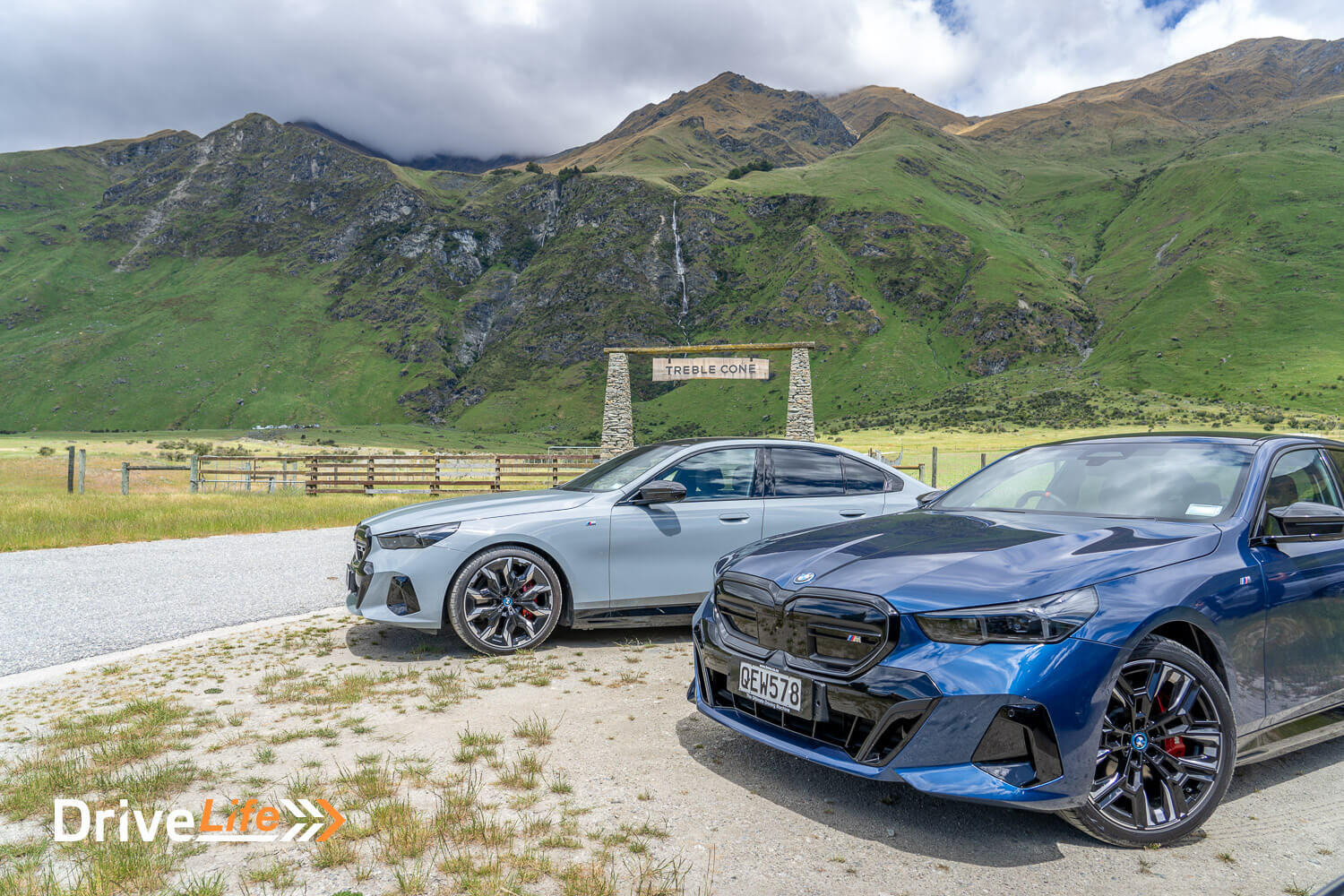
We grabbed a blue i5 and settled in, me first as a passenger. The ride seems slightly firm but still definitely acceptable for a car labelled as the M60 model. From the passenger’s side, the front can be described as “cossetting” and it envelops you giving both feelings of being in the car but also slightly tight for space. There’s a carbon fibre finish across the dash, part of one of the two optional packages that all our cars today are fitted with. It looks okay, and those two curved screens look excellent and are simple to use. The centre console feels quite high – adding to that cossetted feeling – and the controls on it are very similar to the iX and other newer BMW models.
Heading up towards Coronet Peak, the performance is obvious; this can really move it, regardless of the angle of the climb. I’m thrown back in my seat at times as we are launched up the hill with 820Nm of torque helping things along.
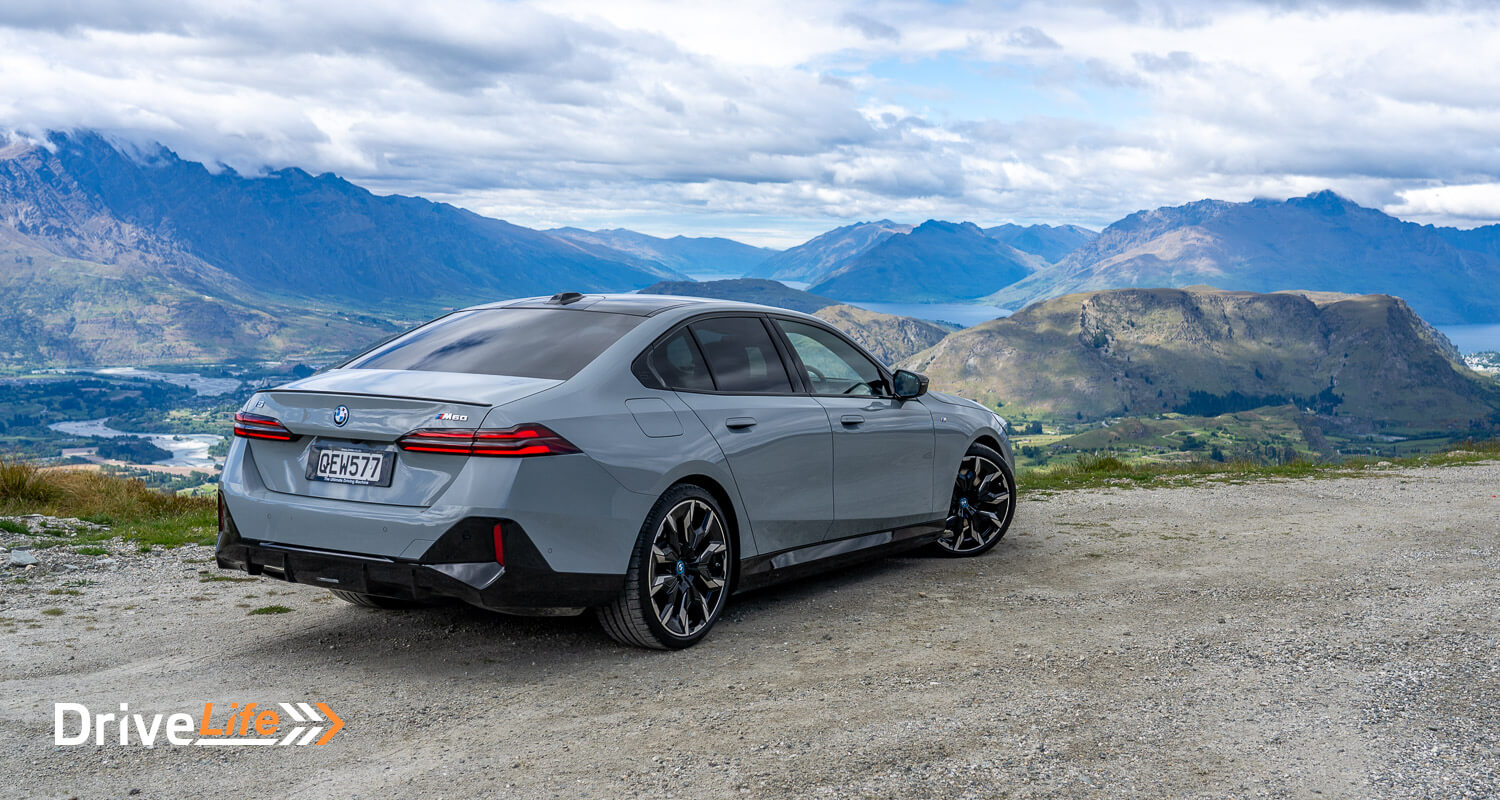
Boost Mode comes into play here and even when I’m not driving, the difference is obvious. I can’t wait to try this mode out for myself. Like in the iX SUV, there is adaptive regeneration, something I love to use and am very happy to see this filtering down to other BMW models, and to other manufacturers. It means if you come up on another car, adaptive regen will apply itself just the right amount without you having to apply the brakes. A great way to get more free charge into the battery bank and it makes for smoother driving.
At the base of the Crown Range, I jump in the driver’s seat for the next leg of the drive. Of course, we strike lots of slow, slow traffic so it’s a gentle drive up. I do manage to use Boost Mode a few times, and it’s impressive. There’s a big digital readout in the centre of the dash to show you how much of your ten seconds are remaining, and the actual boost side is awesome. I like that you don’t have to be hard on the throttle to make it kick in; you can turn it on at any throttle opening. It’s a little strange that you engage Boost Mode using the left-hand steering wheel paddle – and there is no right-hand paddle. This means you don’t adjust regen via paddles and instead need to press down on the gear selector button to bring up the regen options. Not ideal but it still works.
On getting past the peak, we get a good run down the other side of the hill and the i5’s driving dynamics are tested a little. Wow – it’s really composed, quite neutral in its handling and steering feel is surprisingly good. Naturally, with all-wheel-drive grip is excellent, although you can push the tail out if you really try. It’s quite fun too, and the instant torque out of any corner can only help.
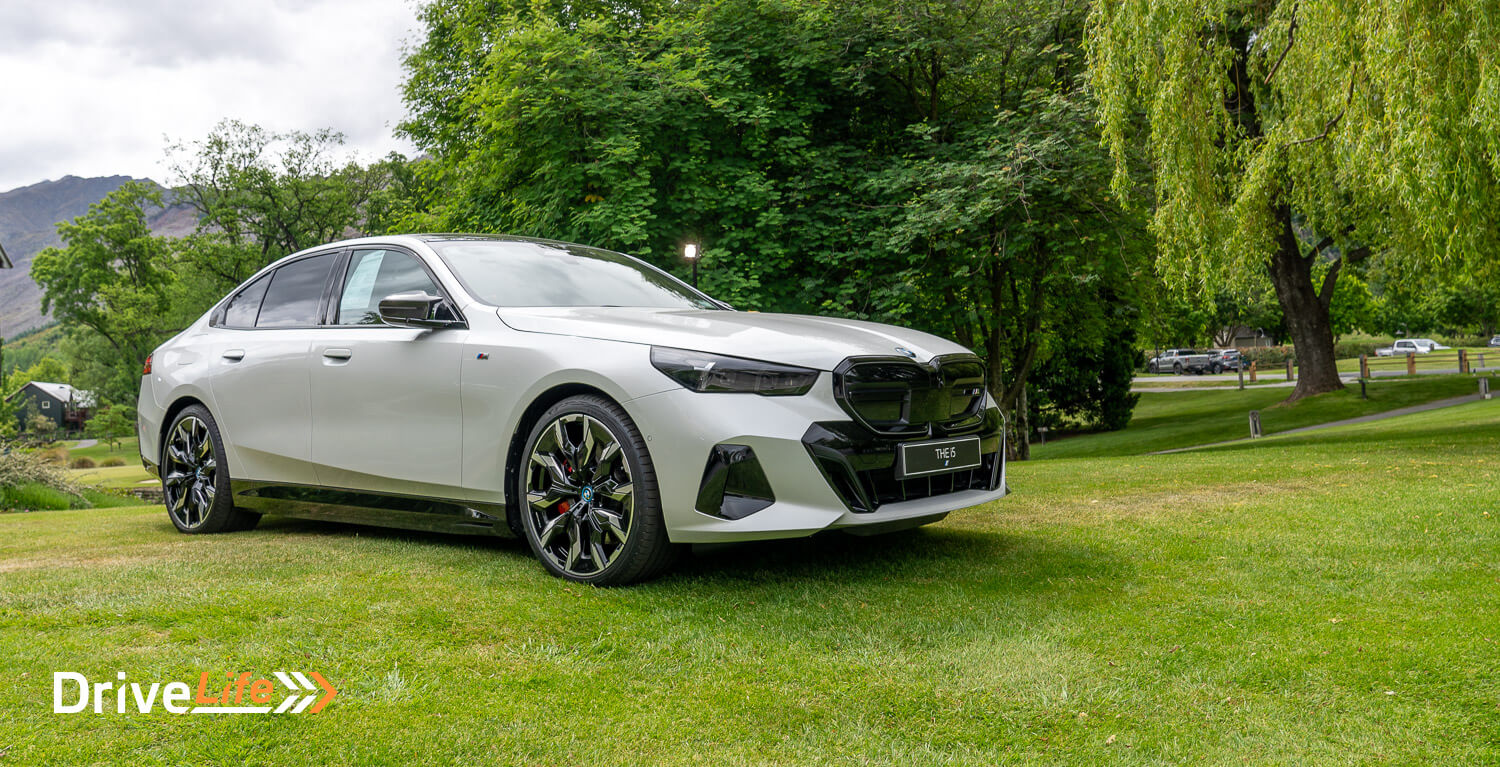
The brakes are tested here too, and brake feel is excellent as is braking power. These impressions continue as the miles rack up – still only a short driving experience but so far the i5 has proven itself as a driver’s car.
Back into normal driving and traffic, the i5’s driver assistance features are there but not intrusive. After a run of cars with lane keep assistance (for example) that’s just too keen, BMW teaches them all a lesson; yes, there are lots of driver aids but they aren’t annoying. Well done, BMW.
We now wait to fully review the new i5 and put it through its paces as a Daily Driver and a driver’s car.
See the new i5 on the BMW New Zealand website.
